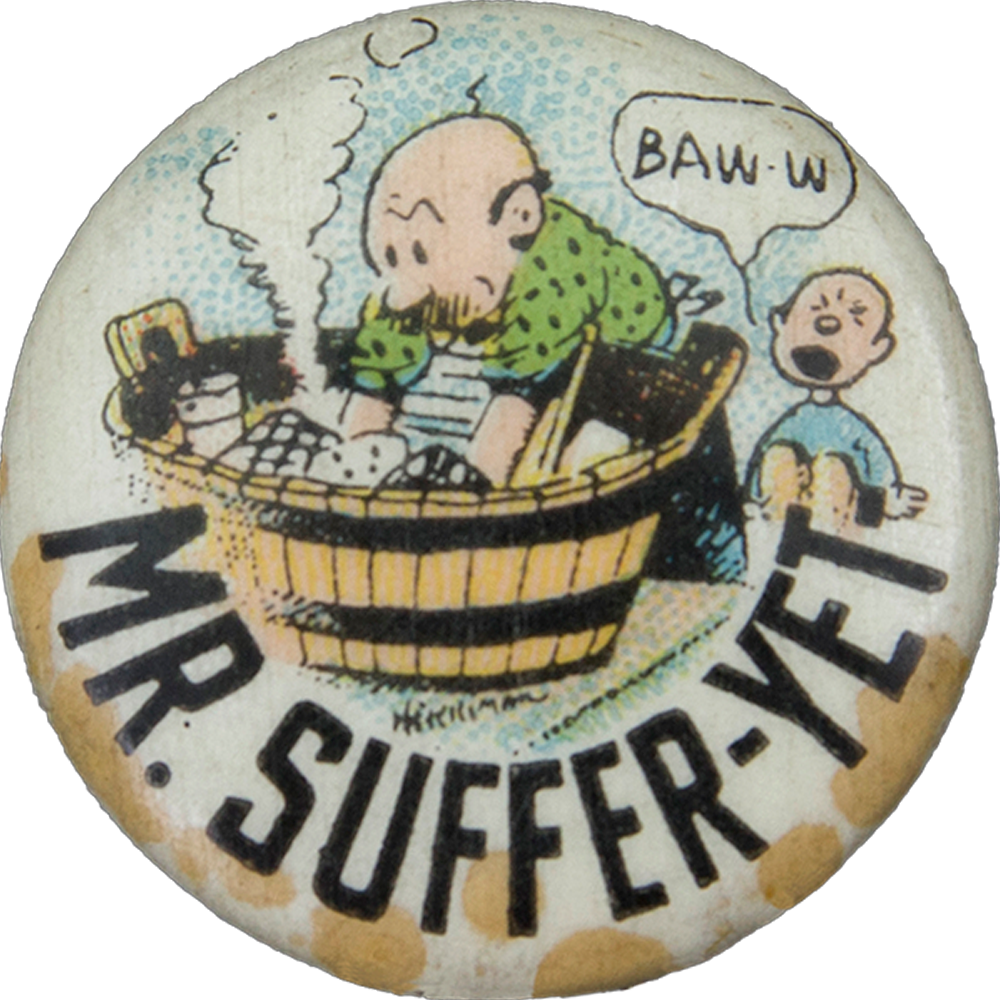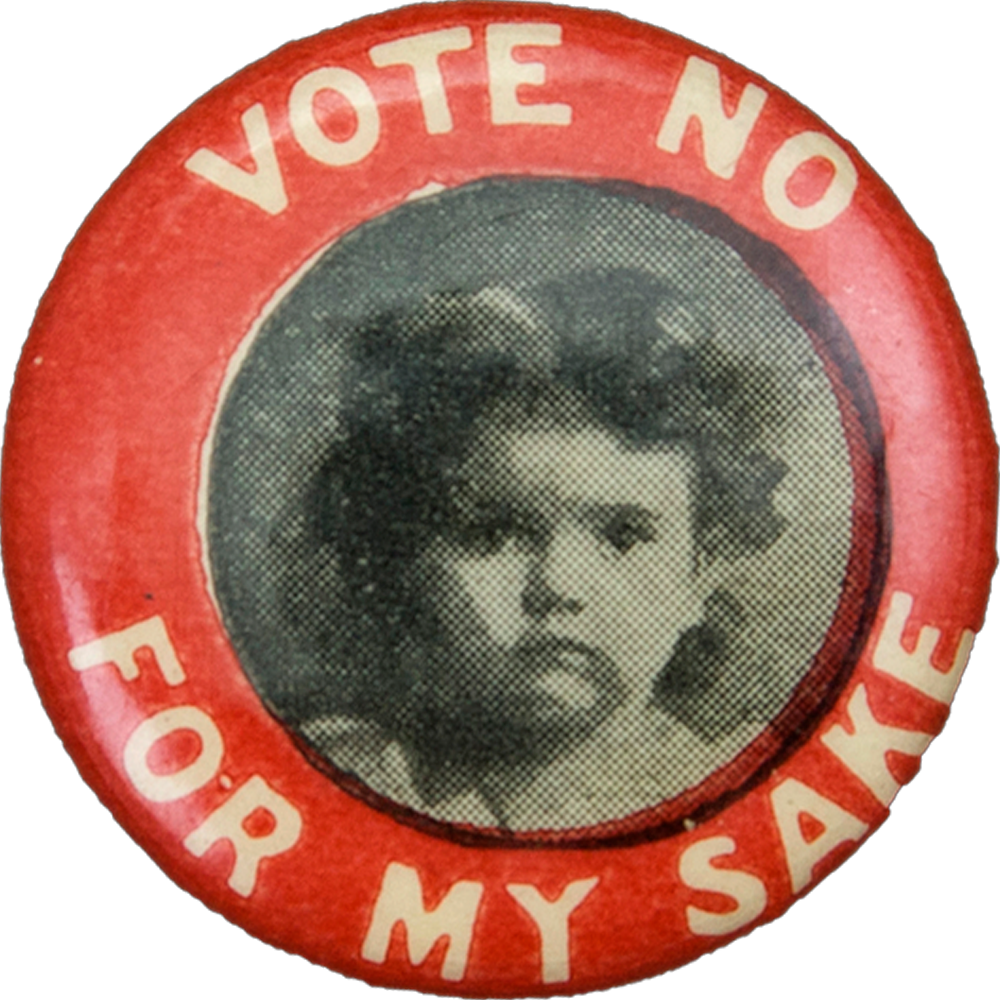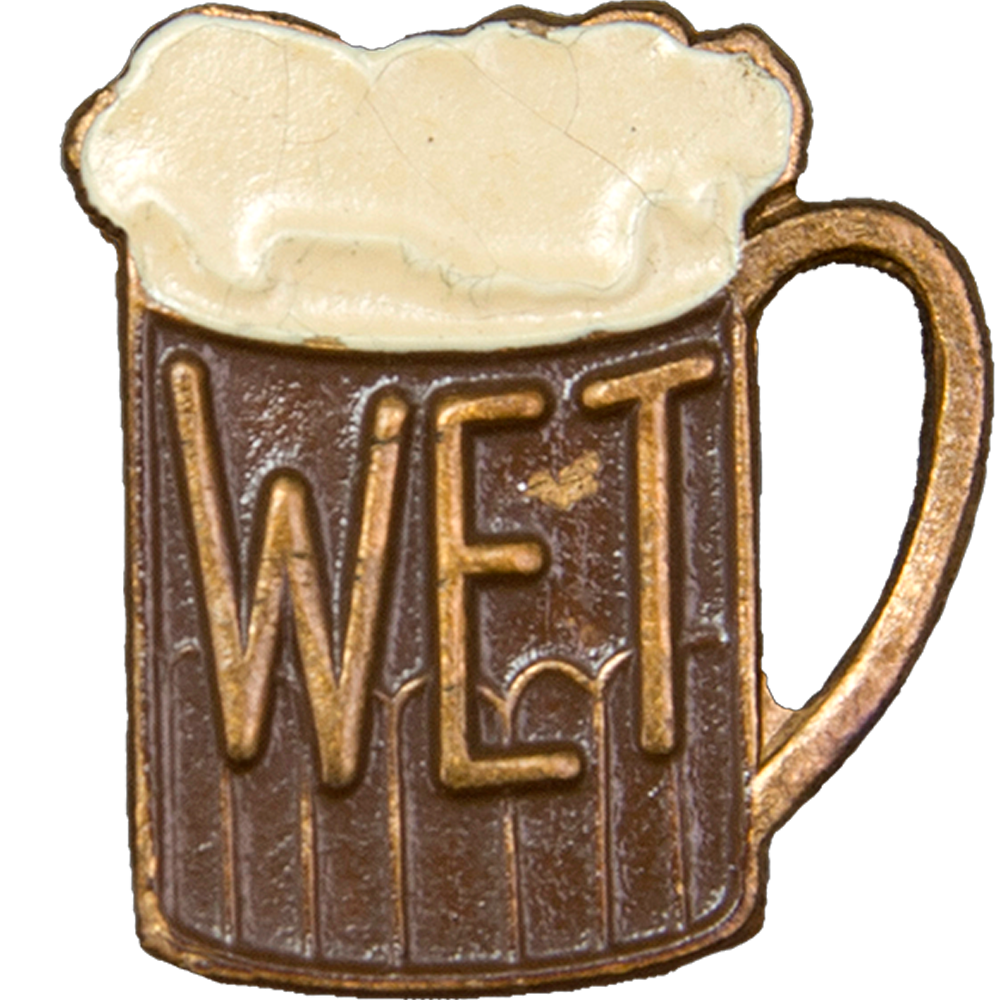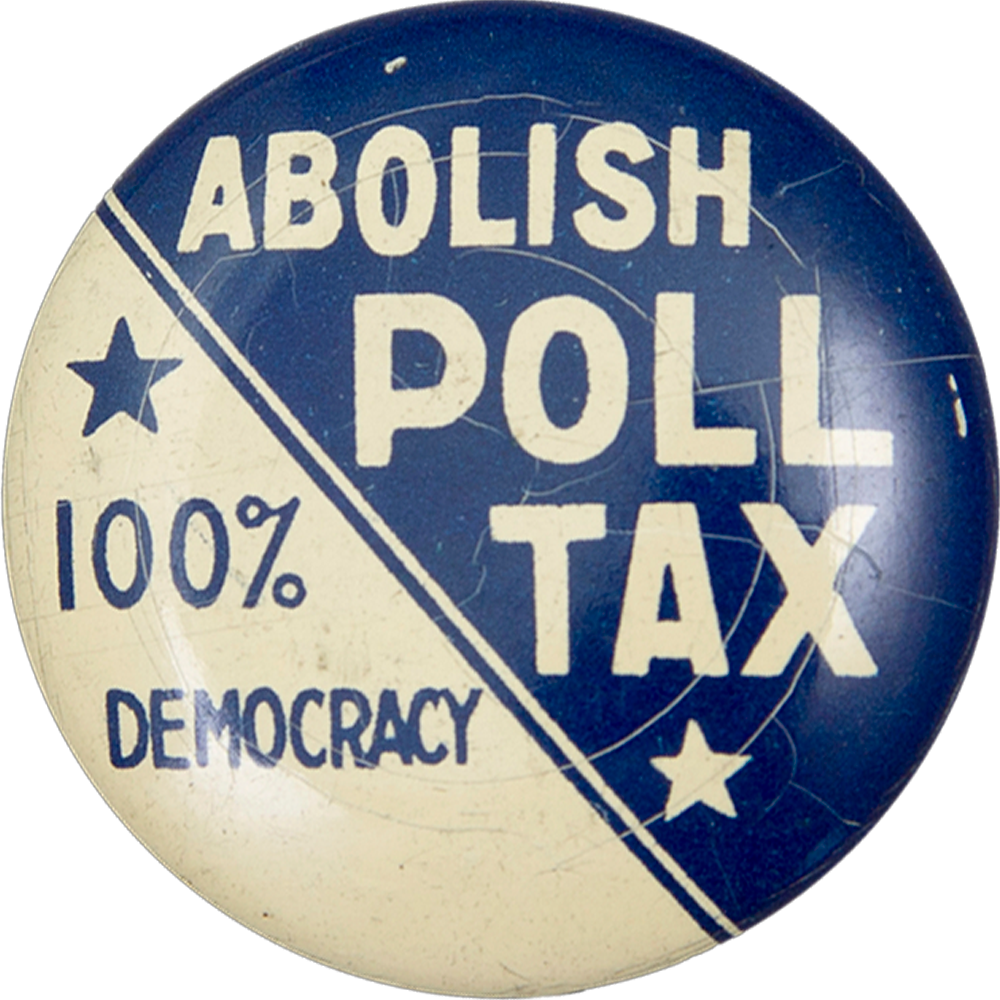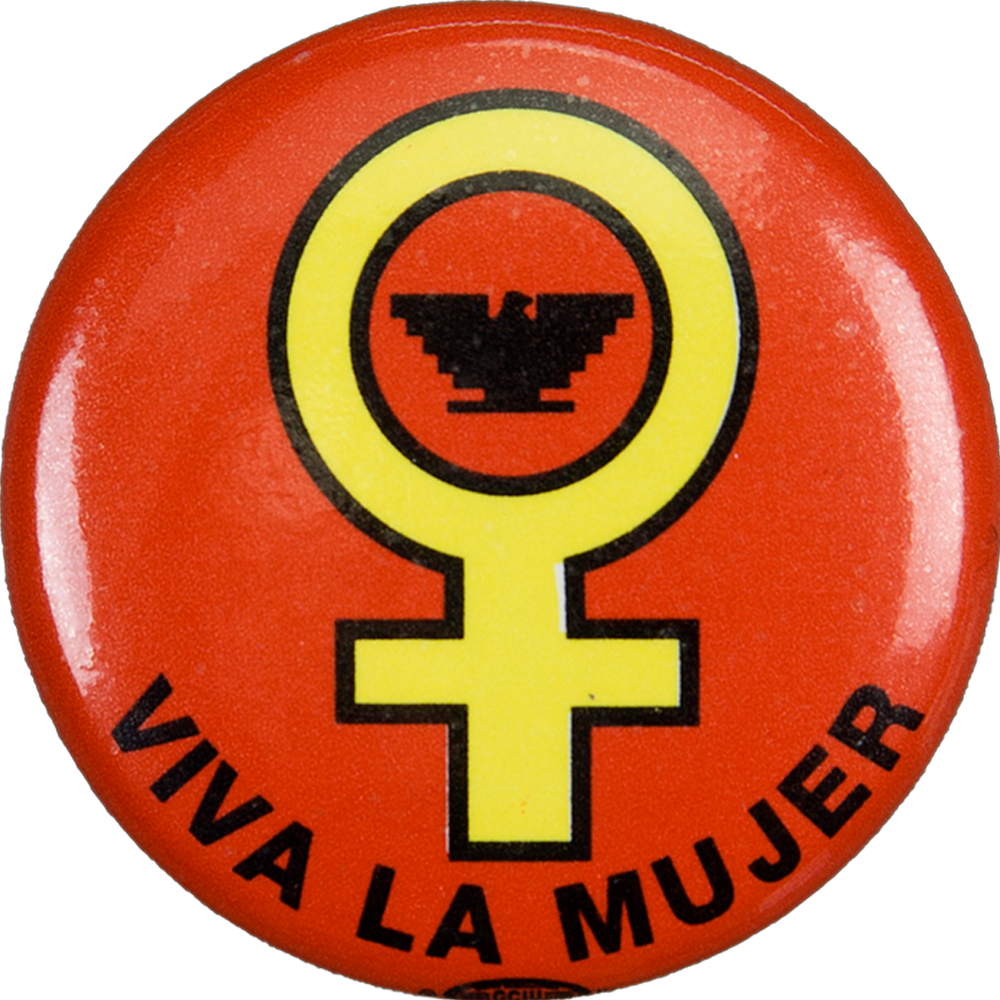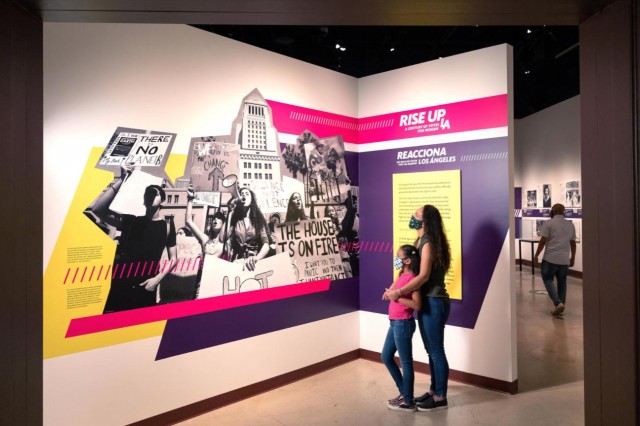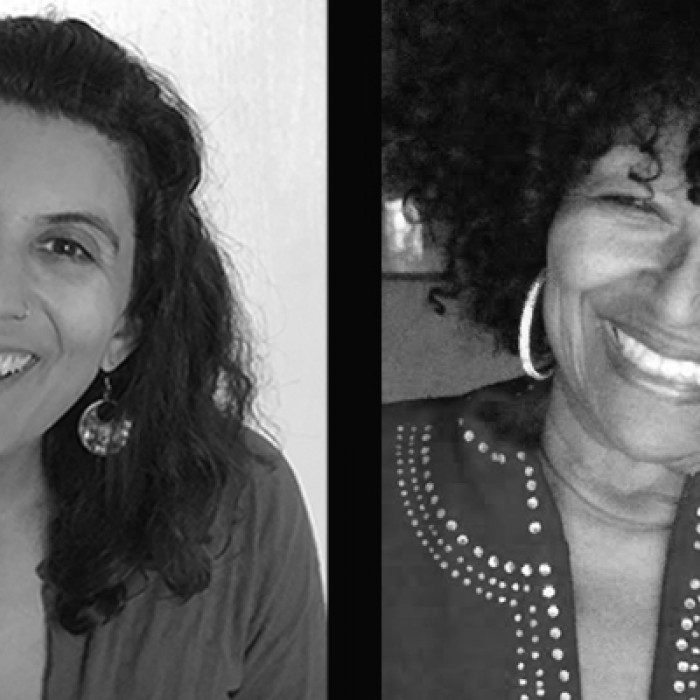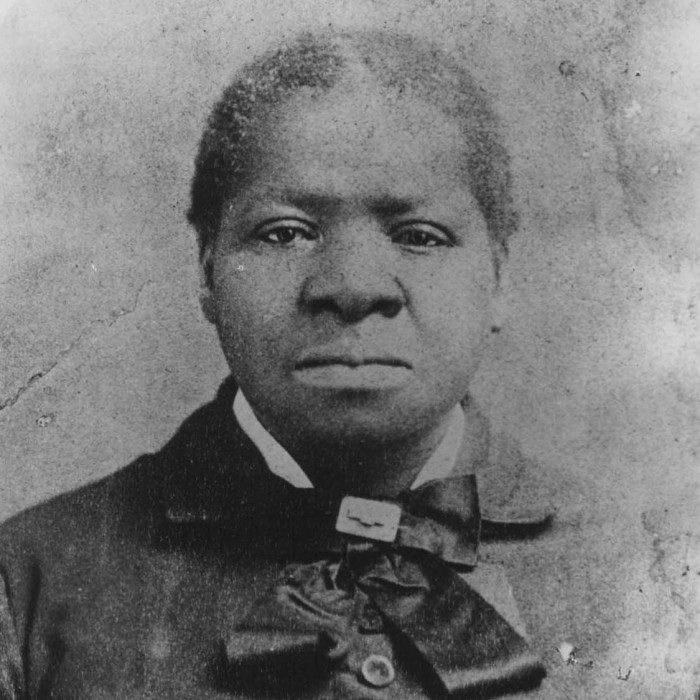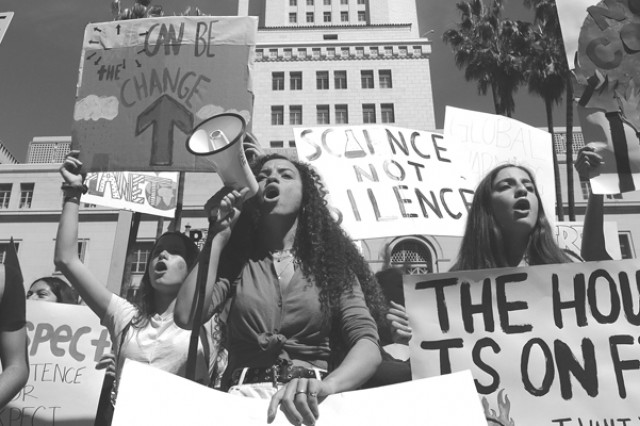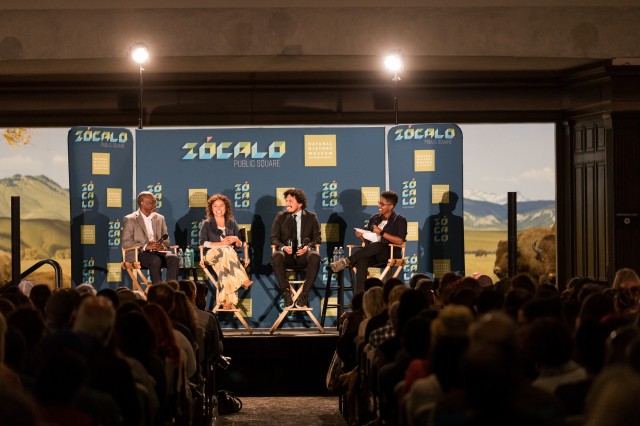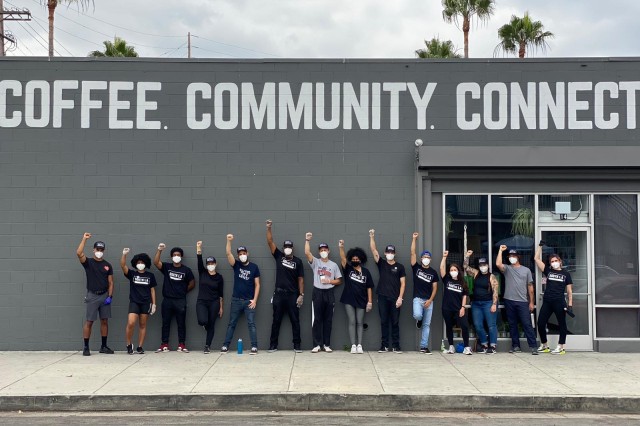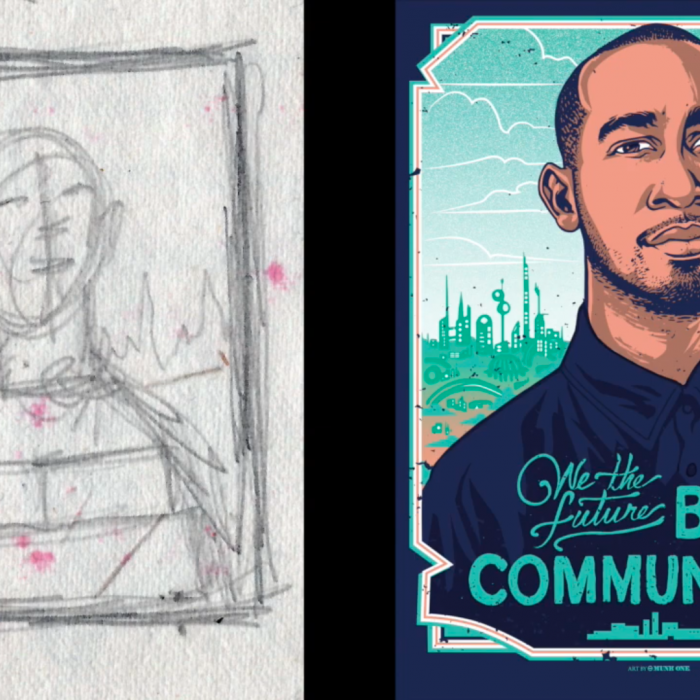
Rise Up LA: A Century of Votes for Women
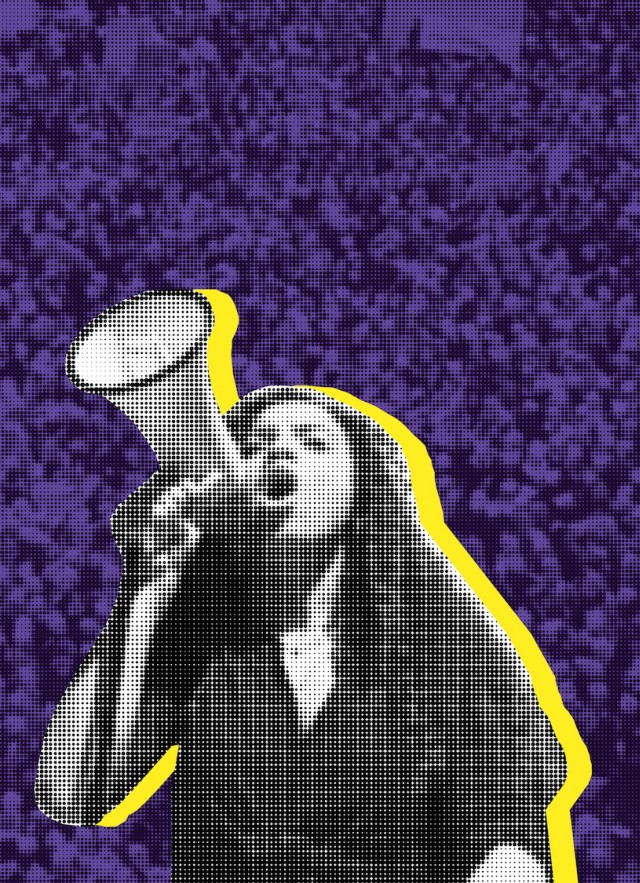
Online Exhibition
Rise Up L.A.
A Century of Votes for Women
On August 18, 1920, the Nineteenth Amendment to the United States Constitution was ratified, officially guaranteeing women the right to vote—but the fight was far from finished.
Women continued with their daily struggles: applying for schools they were barred from attending, working in jobs where they were underpaid, marching in protests, and (finally) voting. Rise Up L.A. highlights women across Los Angeles who advocate for equality on the front lines as well as through everyday acts of bravery and courage.
This online exhibition features unique stories, activities, and links to related events; A Rise Up L.A. exhibition at NHM will feature more than 100 objects—including political buttons, protest posters, fliers, and ephemera—and stories about choices women faced in a century of struggle.
What Issues Divided and United Female Voters?
Many people feared that if women could vote, they would vote together, as a bloc, and so have more influence over elections. This fear proved untrue, because women supported each of the wildly different causes and candidates these buttons represent.
ERA Yes
The Equal Rights Amendment was first introduced in 1923 and nearly a century later has still not become law. (1970s–80s)
Both men and women campaigned against suffrage in the United States, claiming that women needed to be wives, mothers, educators, and philanthropists, and not to compete against men for jobs and political power.
In 1920, female voters helped pass the Eighteenth Amendment, which banned the sale of alcohol. Many hoped the new law would stop men from drinking their paychecks away at bars, and neglecting or abusing their wives and children.
After a decade of Prohibition, women were divided: Women's Christian Temperance Union and other “drys” wanted the alcohol ban to stand; Women’s Organization for National Prohibition Reform and other “wets” supported repeal.
Abolish Poll Tax
Many states required that voters pay a fee or poll tax—a form of voter suppression. 1950s
Presidential campaigns tried to appeal to housewives by selling the image of the First Lady. In the 1960 election, Pat Nixon and Jackie Kennedy competed as much as their husbands, with Nixon's ad campaign featuring the slogan "Pat For First Lady."
In 1968, Shirley Chisholm became the first African-American woman in Congress, and later the first to run for president of the Democratic Party. Ahead of her time, Chisholm had a vision of building a coalition of poor, young, female, and Black voters.
Viva la Mujer
The Aztec eagle, which symbolizes the United Farm Workers, inside the female symbol. (1960s)
In 1970, activist, author, and educator Angela Davis was arrested for suspected involvement in a shootout that occurred in a California courtroom. The “Free Angela” movement gained national support and in 1972 she was found innocent by a jury and released.
Black Lives Matter (BLM)
This L.A.-based group has helped lead a nationwide movement to "eradicate white supremacy and build local power to intervene in violence inflicted on Black communities." (2020)
Hear From Women Who Walked Out, Stood Up, or Sat Down
You probably know a few women in Los Angeles County who have fought for change—NHM talked to a few of them, and asked how the women’s rights movement has grown and shifted in their lifetimes.
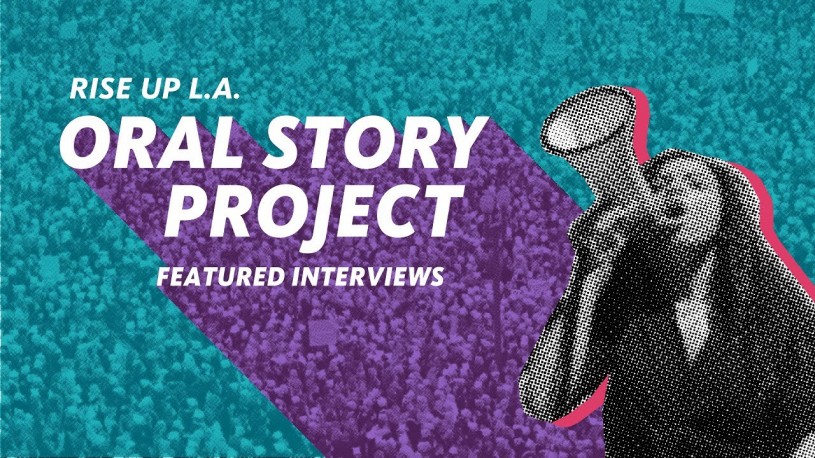
Want to Hear More?
These women took part in oral history interviews conducted by NHM's performing arts department. Listen to the full Rise Up L.A. Oral Story Project archives and watch a panel discussion with some of the interviewees.
Vote on Issues That Defined Suffrage, and the 1920 Election
In 1920, women in California voted (some for the first time) on these ballot measures. How would you cast your ballot if faced with the same measures? Would modern voters make different choices?
Activities
Here are some things you can do to become involved in your community or learn more about history makers in your own life.
ACKNOWLEDGEMENTS
Support for Rise Up L.A.: A Century of Votes for Women has been generously provided by Megan McGowan Epstein and Alan Epstein, the Santa Monica/Westside Legacy Fund for Women and Girls, and The Seaver Institute. The project also would not have happened without the collaboration of the L.A. County Board of Supervisors and Women and Girls Initiative, who provided their time, expertise, and support.
The Rise Up Los Angeles Oral Stories Project is made possible in part by a grant from the City of Los Angeles Department of Cultural Affairs.

